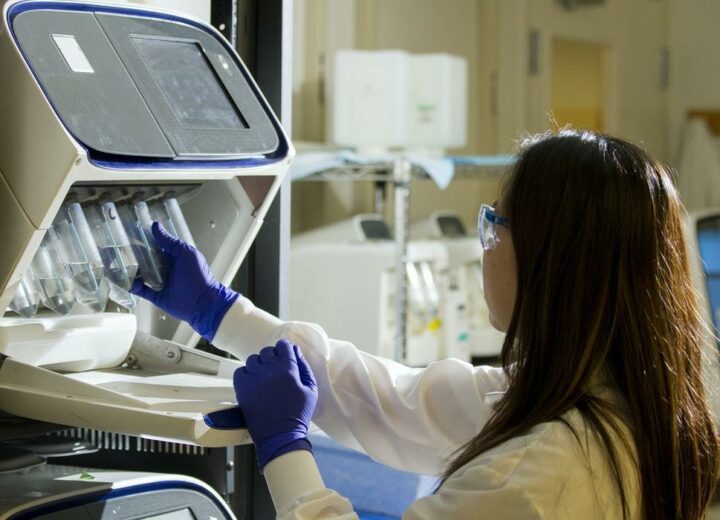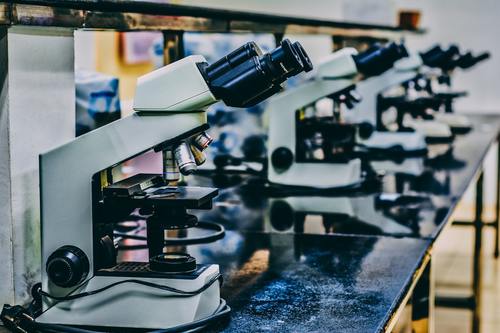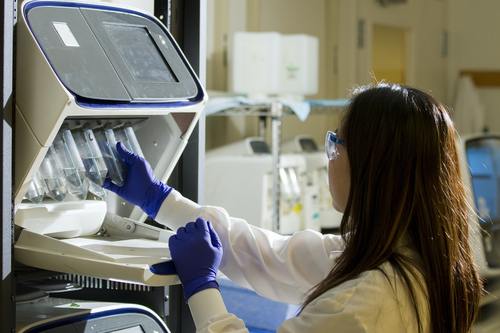Women in STEM Australia

Across the world, women are underrepresented in STEM (science, technology, engineering, and maths) education and careers, and in Australia, the story is no different. From a lack of confidence to cultural issues such as gender stereotyping, and a lack of female role models, there are many reasons why women in Australia are less likely to study a STEM subject in higher education and go on to work in a STEM industry.
Let’s take a closer look at women in STEM in Australia, why the numbers are still tilted in favour of men, and what steps the country is taking to work towards a more gender-balanced future.
Women in STEM Australia – Education
In Australia, women are underrepresented in STEM, with women from minority groups particularly underrepresented. Many believe that this imbalance begins at school level and by year four, girls have reduced confidence in STEM subjects due to several cultural, societal, and environmental factors.
Despite girls and boys having similar average performances in the National Assessment Program – Literacy and Numeracy (NAPLAN), in 2017 fewer girls achieved the highest level in year 3 and 5 numeracy tests, compared to boys.

When we reach year 12, the imbalances in STEM subjects become more pronounced. In 2017, while girls comprised over 50 per cent of enrolments in science subjects, they were vastly outnumbered in ICT and Design Technology, making up just 26 per cent. Similarly, in physics, boys outnumber girls 3 to 1 and in advanced mathematics, boys outnumber girls almost 2 to 1, according to the Office of the Chief Scientist, Australia.
When we look at tertiary level statistics, university, and vocational education and training (VET) in Australia, this pattern of underrepresentation continues. In key subject areas including technology, mathematics, engineering, physics, and astronomy, men far outweigh women. In 2016 the Australian Government Department of Industry, Science, Energy and Resources reported that women made up less than 15 per cent of domestic Engineering and Related Technologies undergraduate course completions and less than 11 per cent of vocational education course completions. In Mathematical Sciences women comprise 37 per cent of undergraduate and postgraduate completions and just 29 per cent of undergraduate and postgraduate completions in Physics and Astronomy in 2016.
The statistics reveal that of the total STEM tertiary level completions, 79 per cent are men and 21 per cent are women. When you look specifically at technology and engineering related courses, women make up just 14 per cent of domestic undergraduate completions in 2016.

It’s important to note that when defining ‘course completions’, this means the number of women who enrolled and completed the course. However, when comparing enrolment and completion data in women, it indicates that most women who enter these courses do complete their education. This suggests that there are low numbers of enrolments to begin with, due to more complex cultural or societal issues.
Looking at all of the STEM courses in Australia, the data shows that only 16 per cent of STEM graduates in Australia are women.
Women in STEM Australia – Workforce
If we look at the proportion of women with STEM qualifications and in the STEM workforce in Australia, the gender disparity remains. Catalyst.org reported that in 2016 women comprised only 17 per cent of the STEM qualified population and a total of 27 per cent of the STEM workforce was made up of women.
In engineering professions, the data showed that only 12 per cent of the workforce in 2016 was made up of women. Similarly, in IT, women are also underrepresented with them comprising only 28 per cent of the workforce in 2017. This percentage has remained the same since 2015.

The Australian Government also reported that in sectors like engineering and IT, women were more likely to be working at lower levels with the company than in senior and high levels. This has led to a pronounced gender pay gap in STEM industries, varying from 12 per cent in science, 11 per cent in engineering and 20 per cent in IT.
Why do less women study and work in STEM in Australia?
There are many reasons why fewer women study and work in STEM in Australia. One of the main arguments surrounds the cultural barriers girls and young women face when they are deciding which educational paths to pursue. In school, girls are faced with overcoming gender bias and stereotyping which dictates boundaries on which subjects are ‘available to them.’ There is also a strong argument that a lack of representation, for example, no female science or IT teachers, can make it harder for students to visualise themselves in these roles. This lack of representation is often referred to as a ‘leaky pipeline’, where a low representation of women at all levels within STEM leads to a society that undervalues the opportunities and innovations a career in STEM could provide for women.

A government survey found that in fields where women were vastly underrepresented, such as engineering, IT and physics, over 80 per cent of women highlighted that a lack of female role models was a major barrier for gender equality in their field. Role models do not only include teachers or colleagues, but it’s also important for women to be part of the STEM conversation. In 2017, only 28 per cent of STEM academic writers featured in The Conversation, and just 26 per cent of media mentions in relation to STEM stories in Australia were female.
This feeling of not belonging, or as if you are an imposter, can be hugely damaging for women at all levels of their education and career. Sometimes referred to as imposter syndrome, it can result in women questioning their ability and place within the world of STEM.
This, alongside male dominated working environments in STEM, can go some way to explaining the underrepresentation of women in these fields.
Why is a gender diverse STEM workforce important?
There is plenty of research that highlights the benefits of a diverse workforce in STEM and across all sectors of business, from financial gain to performance boosts and innovation.
A report by McKinsey titled ‘Why Diversity Matters’ revealed that gender diverse companies are 15 per cent more likely to outperform their counterparts financially.

Alongside this, research conducted by the Australian Council of Learned Academies (ACOLA) also found that integrating STEM skills is extremely important towards the success of leading firms and organisations across a variety of industries.
Recently, the Grattan Institute estimated that adding an extra 6 per cent of women to the workforce could add up to $25 billion to Australia’s Gross Domestic Product.
Looking to the future
One of the biggest changes Australia has made to work towards a more gender balanced workforce in STEM is the development of a Decadal Plan for Women in STEM, released on 1 April 2019. Supported by the Australian Government and developed by the Australian Academy of Science and the Academy of Technology and Engineering, the plan was designed to map out a sustained increase in women’s inclusion in STEM over the next decade. It will work towards tackling systemic issues affecting women and offer high level guidance surrounding cultural, societal, and environmental barriers.

Alongside this, the Government has also pledged $2 million over the course of three years to support the expansion of the Science in Australia Gender Equity (SAGE) pilot, which is based on the UK’s successful Athena SWAN model. Science in Australia Gender Equity now encompasses 44 Australian universities, research agencies and medical research institutes, which makes up around 50 per cent of the nation’s publicly funded research sector. SAGE has helped their members to introduce more gender equal policies such as improved carers leave, better on-campus child-care and female focused recruitment processes.
With the Government’s funding and policy, alongside a change in the way businesses see women in the workplace and recruitment practices, Australia is well equipped to make important changes that will benefit women in STEM.
STEM Women Australia Event
At STEM Women, we’re on a mission to address the gender imbalance in STEM. We host a number of networking and careers events across the UK, Ireland, Europe and Australia dedicated to helping more women enter into STEM careers. Our events provide employers with the opportunity to introduce their graduate opportunities, speak on a panel, list their job roles online and reach out to the attendees immediately after an event. From sponsorship and stands at careers events, to job boards and recruitment consultants that specialise in sourcing the very best talent, get in touch with us today for more information. Visit our events page to find out more and follow us on LinkedIn, Facebook and Twitter to stay up to date with all the latest news and event information.
